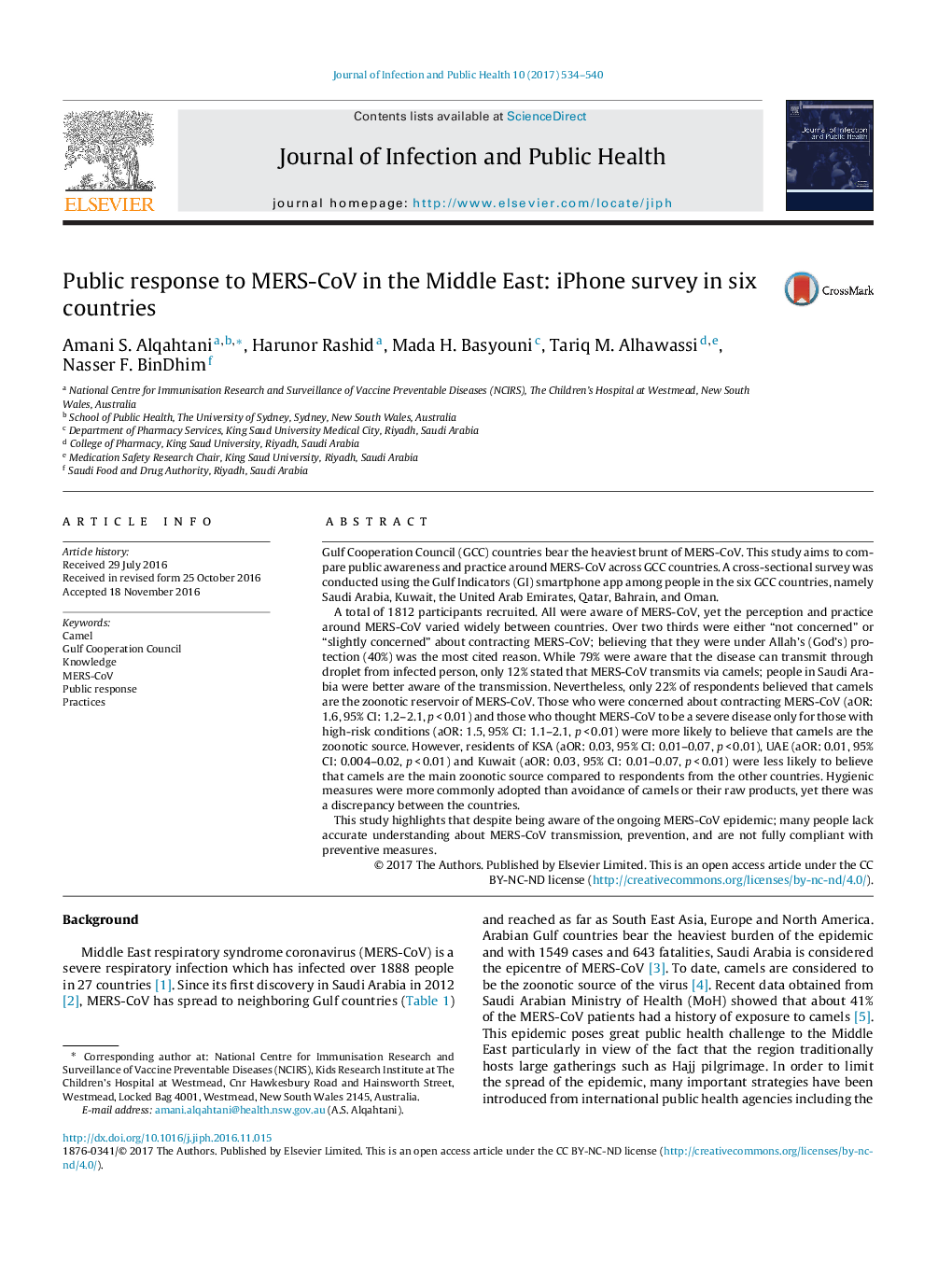| Article ID | Journal | Published Year | Pages | File Type |
|---|---|---|---|---|
| 5672743 | Journal of Infection and Public Health | 2017 | 7 Pages |
Gulf Cooperation Council (GCC) countries bear the heaviest brunt of MERS-CoV. This study aims to compare public awareness and practice around MERS-CoV across GCC countries. A cross-sectional survey was conducted using the Gulf Indicators (GI) smartphone app among people in the six GCC countries, namely Saudi Arabia, Kuwait, the United Arab Emirates, Qatar, Bahrain, and Oman.A total of 1812 participants recruited. All were aware of MERS-CoV, yet the perception and practice around MERS-CoV varied widely between countries. Over two thirds were either “not concerned” or “slightly concerned” about contracting MERS-CoV; believing that they were under Allah's (God's) protection (40%) was the most cited reason. While 79% were aware that the disease can transmit through droplet from infected person, only 12% stated that MERS-CoV transmits via camels; people in Saudi Arabia were better aware of the transmission. Nevertheless, only 22% of respondents believed that camels are the zoonotic reservoir of MERS-CoV. Those who were concerned about contracting MERS-CoV (aOR: 1.6, 95% CI: 1.2-2.1, p < 0.01) and those who thought MERS-CoV to be a severe disease only for those with high-risk conditions (aOR: 1.5, 95% CI: 1.1-2.1, p < 0.01) were more likely to believe that camels are the zoonotic source. However, residents of KSA (aOR: 0.03, 95% CI: 0.01-0.07, p < 0.01), UAE (aOR: 0.01, 95% CI: 0.004-0.02, p < 0.01) and Kuwait (aOR: 0.03, 95% CI: 0.01-0.07, p < 0.01) were less likely to believe that camels are the main zoonotic source compared to respondents from the other countries. Hygienic measures were more commonly adopted than avoidance of camels or their raw products, yet there was a discrepancy between the countries.This study highlights that despite being aware of the ongoing MERS-CoV epidemic; many people lack accurate understanding about MERS-CoV transmission, prevention, and are not fully compliant with preventive measures.
